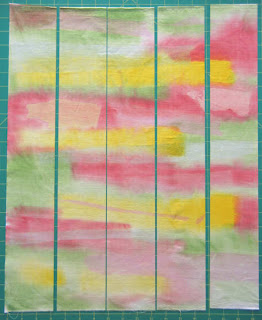
At last weekend's Arts & Crafts Fair I found a vendor selling these elk horn buttons. I don't run across these often, especially loose with so much variety of size, shape and color, so I didn't hesitate one bit to pick out a few to take home. Actually, this fair had 3 vendors carrying buttons, but this first vendor I ran across was the only one not pre-packaging them in nice uniform groupings of the whitest ones.
I really had nothing in mind as I sorted through the bin, vaguely thinking about use as actual buttons on something. But I soon found myself discarding the whitest most uniform ones for these yellower ones, especially any with interesting edges and shapes. And then...am I the only one that sees faces in these buttons?

















































